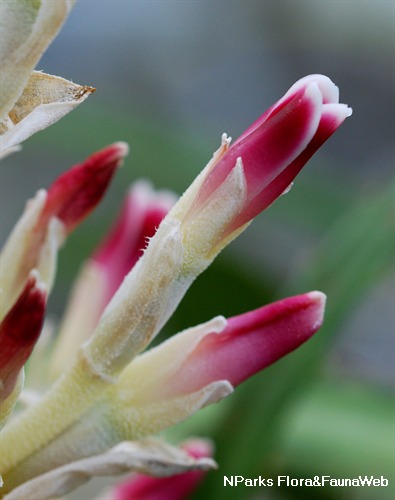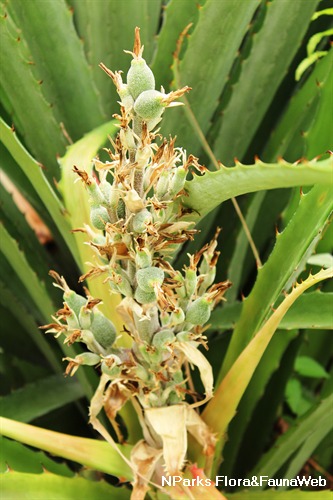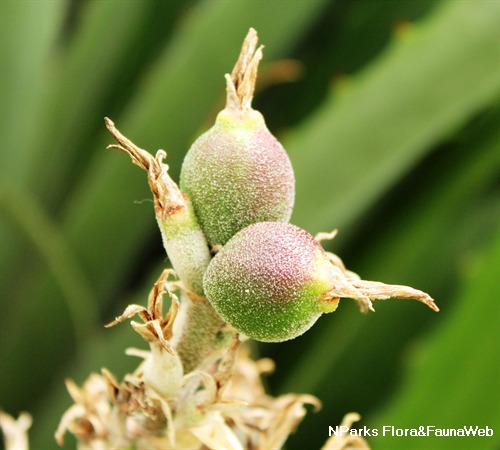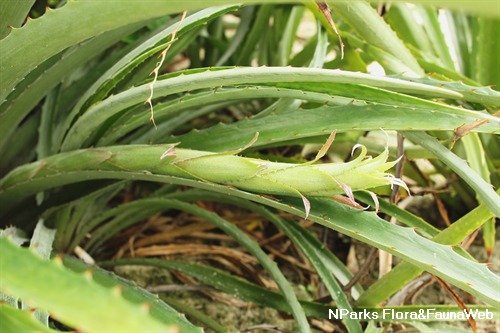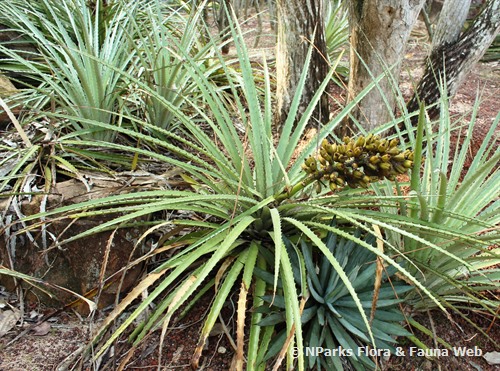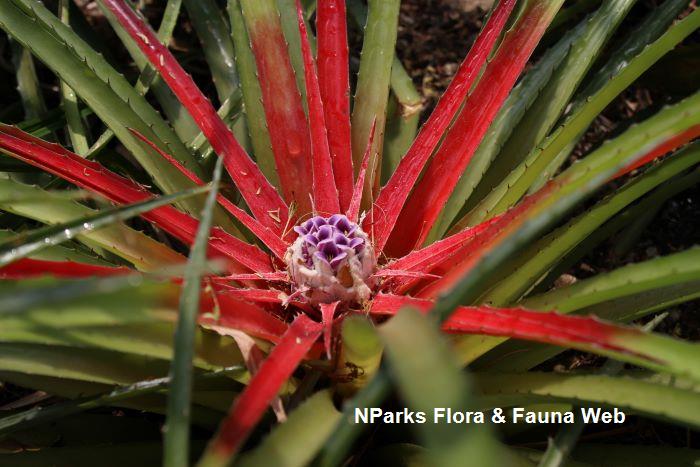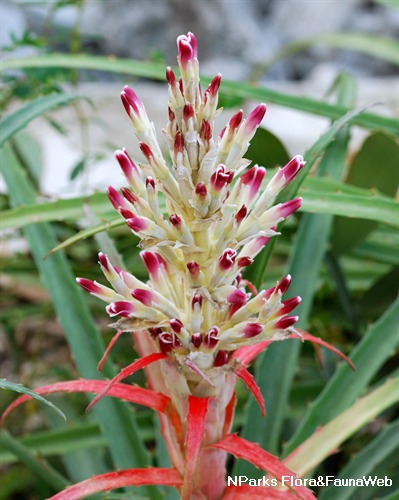
Name
Classifications and Characteristics
| Plant Division | Angiosperms (Flowering Seed Plants) (Monocotyledon) |
|---|---|
| Plant Growth Form | Herbaceous Plant |
| Mode of Nutrition | Autotrophic |
Biogeography
| Native Distribution | Mexico, Caribbean Islands and Tropical America. |
|---|---|
| Native Habitat | Terrestrial |
| Local Conservation Status | Non-native |
Description and Ethnobotany
| Growth Form | A herbaceous shrub, it spreads via offshoots from stolons and has a rosette growth form. |
|---|---|
| Foliage | The stiff, linear leaves are arranged in a rosette, the leaf margins are covered with spines which curve in both directions towards the leaf apex and towards the leaf base. The new leaves turn bright orange-red when a flower inflorescence is developed. |
| Flowers | The flowers are borne on a pyramidal-shaped inflorescence. The flower scape is white and covered with a powdery layer, the individual flowers measure about 6cm in length. The flower petals are red with white margins. The flower sepals are erect and triangular-subulate. |
| Fruit | The fruits are in the form of elliptical berries which turn yellow when mature. |
Landscaping Features
| Desirable Plant Features | Ornamental Form |
|---|---|
| Landscape Uses | Parks & Gardens |
| Usage Hazard - Cons | Spines/Thorns - Leaf |
Plant Care and Propagation
| Light Preference | Full Sun |
|---|---|
| Water Preference | Moderate Water |
| Rootzone Tolerance | Well-Drained Soils |
| Propagation Method | Seed, Stolon / Runner |
Foliar
| Foliage Retention | Evergreen |
|---|---|
| Mature Foliage Colour(s) | Green |
| Young Flush Texture(s) | Smooth |
| Foliar Type | Simple / Unifoliate |
| Foliar Arrangement Along Stem | Rosulate / Rosette |
| Foliar Attachment to Stem | Sessile |
| Foliar Shape(s) | Non-Palm Foliage |
| Foliar Margin | Serrate / Toothed |
| Foliar Base | Clasping |
Image Repository
Others
| Master ID | 31665 |
|---|---|
| Species ID | 6064 |
| Flora Disclaimer | The information in this website has been compiled from reliable sources, such as reference works on medicinal plants. It is not a substitute for medical advice or treatment and NParks does not purport to provide any medical advice. Readers should always consult his/her physician before using or consuming a plant for medicinal purposes. |

